Today, women’s self-help groups in villages in India comprise several businesswomen who earn profits. The groups are no longer only about advancing loans to members in need. Sarita Brara provides snapshots from the recently concluded India International Trade Fair in Delhi and tells us how some of the women have had to struggle for years and work hard to earn and become self-reliant
“It was after a lot of persuasion and cajoling that women in remote hamlets of our area came forward to form a self-help group (SHG). Once this was done, it was not difficult to get the women trained in weaving, spinning, knitting, and then venturing into the business of making products from Pashmina wool,” says Rigzen Yangdol of Phyang Village in Leh Distrct in Ladakh. She proudly points out that her Khushi SHG now has 35 members and makes around Rs 2 lakh annually from the sale of their products – gloves, caps, socks, shawls, stoles, mufflers.
Yangdol busied herself knitting if she had few minutes to spare even as she catered to the customers at her stall at the Saras Aajeevika Pavilion at the India International Trade Fair held in New Delhi in November. Yangdol could not hide her excitement when she told us that her SHG had sold products worth Rs 70,000 on the first day. She said the average income was Rs 15000 to Rs 20000 rupees a day; it wasn’t for lack of buyers but that they did not have enough stocks to sell.
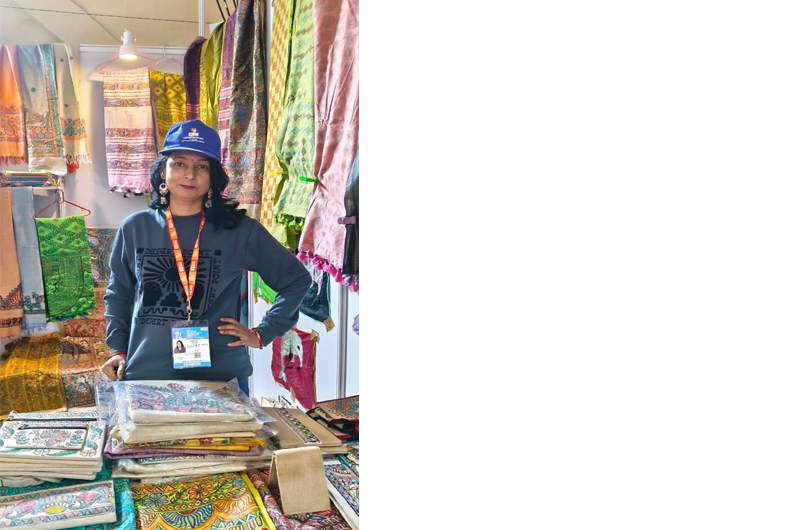
on their products – saris, suits, handbags, purses, wall hangings.
Women SHGs are no longer only about giving loans to fellow members for domestic or other requirements. Today, many of these women from India’s villages can be called businesswomen earning big profits. “It was a long and arduous journey for our self-help group to come to this stage and for us to become entrepreneurs in our own right,” says Yangdol.
This is not just the story of Khushi SHG but the story of almost every SHG that made it to IITF 2024 at the Lakhpati Didi Zone at the Saras Aajeevika Pavilion, showcasing a large variety of traditional art and craft from hamlets and villages from across the country. Each of the SHGs have had to struggle for years to become self-reliant and earn revenues – it was sheer hard work and skill, the training they received, and what they had learnt from their elders and generations before that helped.
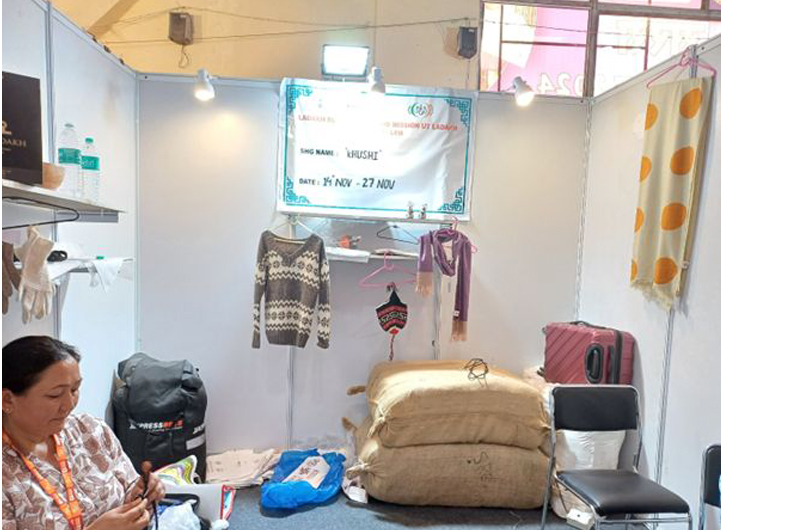
socks, shawls, stoles, mufflers.
Gudiya Devi from Sharfuddinpur Village lost her husband eight years ago. Now she leads Jyoti SHG which excels in the art of Sujini embroidery – passed down from one generation to the next, in Bihar. “It is the poor housewives who, after six months training in the art, work tirelessly every day,” she says. The proof of their hard work and skill lay in the display of colourful and eye-catching designs on saris, dupattas, wall hangings and a number of other products. “Yes, we are making good money,” Gudiya says, while explaining her art form.
No exhibition or trade fair can be complete without the famous Madhubani paintings. Kalyani SHG led by Shalini Jha from Ranti Madhubani Village has Madhubani styles and designs on their products – saris, suits, handbags, purses, wall hangings, etc. “It has taken years for simple housewives from our village to don the role of businesswomen,” she says. “To begin with, we had just five members who agreed to come together to the form the group. Today, we are a strong 30-member group that works round the year to make these products. It takes more than year all of us working together to make a variety of products for one exhibition.”
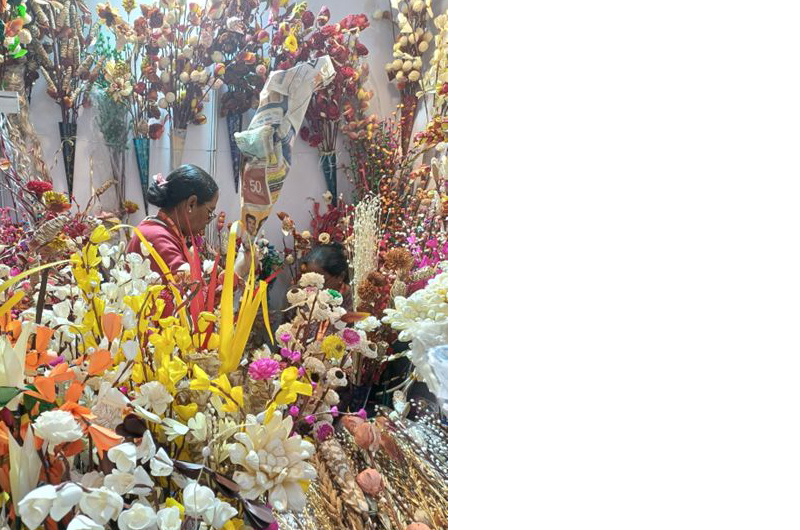
making artificial flowers, all of which were sold like hot cakes at IITF.
Manorma Devi from Vaishnavi SHG in Jitwarpur Village in Madhubani District did good business selling Madhubani paintings. There were over 10,000 paintings brought to the fair by the group. “We are doing very good business but we should get a chance to come more often and not after a gap of four to five years,” she says.
Embroidery work on what is known as chamba rumaal (rumaal is handkerchief) is in my blood, says Anita, master trainer in the art representing Ma Durga SHG that 25 members. “My mother, maternal grandmother and generations before them have been making these chamba rumaals, with intricate, colourful and attractive designs with double-satin stitch. The unique feature of this embroidery on chamba rumaal, a 500-year art, is that the designs look the same from both sides of the cloth and so can be put to use on either side,” she explains.
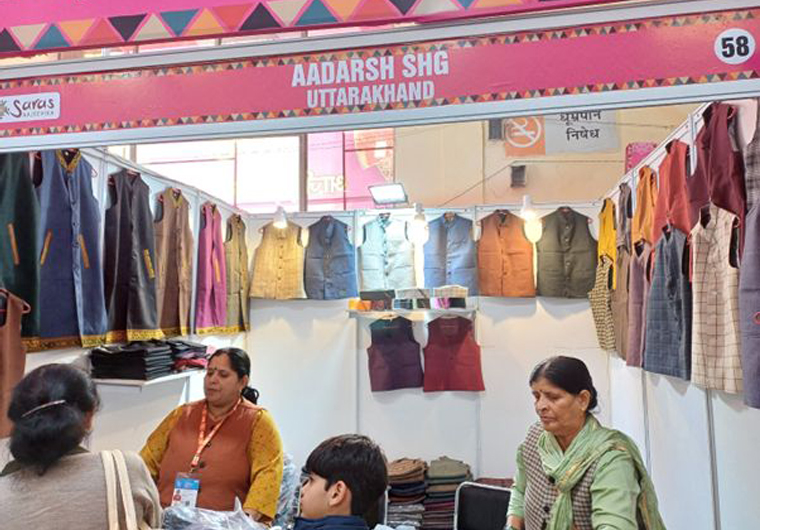
The embroidery on the rumaal pieces is also used on dupattas, saris, stoles, wall hangings and other decorative spreads. The prices range from Rs 250 to over Rs one lakh. The wall hanging that adorned one side wall of her stall was an award-winning item priced at Rs 135,000, Anita points out. “This type of embroidery is time-consuming and the smallest of pieces with this embroidery takes two to three days.” A national award winner, Anita holds regular workshops to ensure that the art form that has become synonymous with chamba survives.
Hidden behind a myriad of flowers of different hues was Smita Shaban Verekar who did brisk business selling artificial wonders created from the shola pith plant, corn flower, bamboo and cotton. Smita, who had come from Harvalem Village in Bicholim in Goa, says her family is in the business of making artificial flowers, all of which were sold like hot cakes at IITF. “At one time, I used to teach the art of making decorative items from shells that are found in abundance on Goa beaches,” she recalls. Smita later realised there was more money in creating artificial flowers that were much in demand. Her entire family is in the business of artificial flowers. Smita represented Shree Shauryavan SHG at IITF.
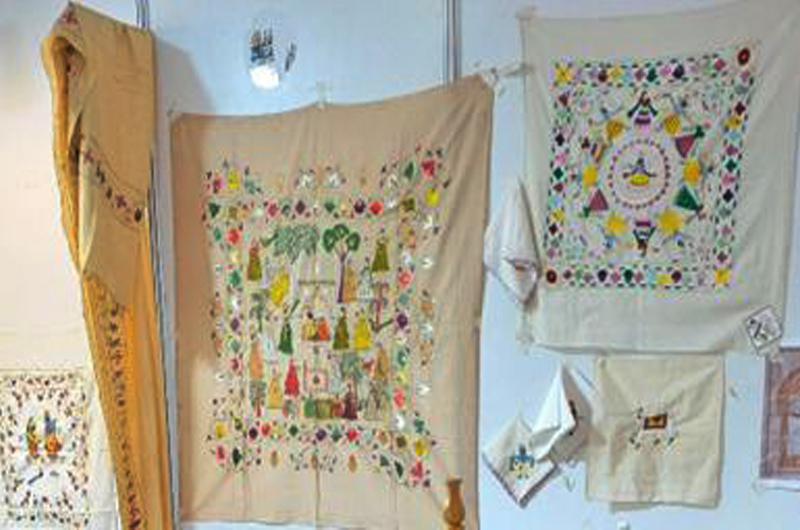
Whether it was Nahida from Gilani SHG with 10 members selling woollens from Kupwara in Kashmir or Nirmala Rani of Aadarsh SHG from Uttrakhand Village selling vest coats (locally called sadaris) or other women selling their art and craft, the general feeling was that IITF was a good platform for SHGs to sell their products. The SHGs were provided stalls free of charge there were 138 stalls. A record Rs 8 crore (Rs 80 million) worth of business was done by the grassroots entrepreneurs who had set up stalls and came from various parts of India, said an official release. There are more than 89 lakh SHGs in India but the number of members who are able to earn even Rs one lakh a year from sale of products is still very small. It is only the women who have entrepreneurial qualities who are able to earn more and eventually start their own business.
(The writer is a senior journalist who divides time between Delhi and Shimla.)



 from Webdoux
from Webdoux